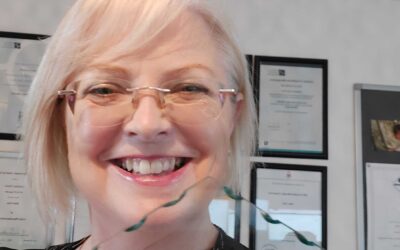What it means to be a patient in a rural community.
I have been asked to speak at a meeting for the Rural Service Network about my experience of working in health and care in rural environments and this has got me thinking. My experience is founded upon the experiences of patients, carers, service users, clients and staff.
Needing professional help for a health or care problem, particularly when you’re getting older, is not straightforward. The challenges in accessing what you need and navigating your way through the process are tough for those of us who know their way around, but add to this aging, sensory impairment, loss of cognitive function (MCI/dementia) and rural transport then they can become insurmountable.
Over the last few months I have been speaking to health and care providers, and providers of community centres and foodbanks across Lincolnshire – a rural county, where I live. Because a place is pretty, and has people visiting for holidays, it doesn’t necessarily make it a rural idyll for retirement.
Housing is cheaper in most rural communities, but not so cheap that it makes up for the lack of public transport, amenities and distance from personal support networks.
When people move to Lincolnshire they often think it will be relaxing, quiet and enjoyable for their retirement. It is quiet, it is pretty, but if you are having to manage a health condition it is not relaxing.
Care Provision
Rural areas are less densely populated, and with a higher than average age, due to retired people moving to these areas, meaning there are less people of working age to fill job vacancies. The jobs that are available for unskilled or low skilled workers in Lincolnshire are plentiful in agriculture, horticulture and food processing, in addition to other occupations, although the average wage is low, there is choice. Care Workers work antisocial hours and receive (on the whole) low wages. It took me two years to find a homecare company with the staff capacity to take on the care of my mother – even though this was self-funded and paying a higher rate than the council.
Public Transport
If you live in a village the only buses you can be certain of are for the school run. Different villages will have different timetables, and some may even have trains, but both can be very limited.
The voluntary car service will run patients to hospital, and some other healthcare appointments, but they still charge 45p per mile.
Healthcare Facilities
Not all villages have a doctor’s surgery, or a pharmacy, so when you are feeling at your worst you may have to wait an hour for a bus, stand in the rain to catch it, then walk to the doctor’s or pharmacy (repeat to return).
Hospital journeys can be long. There are 2,687 miles² in Lincolnshire served by five hospitals, providing three A&E departments, only two of which are open 24/7.
What does this mean for patients?
Travelling to appointments if you can’t drive is very difficult, and expensive. For instance I live 22 miles from Lincoln County Hospital, where I would be treated if I needed chemotherapy and/or radiotherapy this would cost £9.90 each way by the volunteer car service or £11.20 each way by train (one change and 1 hour 37 minutes), then taxi from the train station to the hospital. I’m sure that there is a bus, but I can’t find the timetable.
A large number of people have to rely on friends, relatives and carers to take them to appointments. During my travels I met with two sisters who were taking their mother to an appointment related to her diabetes. The mother couldn’t weight-bear, so both sisters had taken the day off work to collect her, lift her into her wheelchair for each time she got in and out of the car. It took them a day because they needed to collect her, drive to the hospital to arrive 45 minutes before the appointment to get parked and walk approximately half a mile of hospital corridors to the appointment, wait up to two hours to be seen, by which time she needs lunch, then half a mile back to the car park before taking her home.
Patient transport is laid on for patients who qualify. This means a long journey, collecting patients across rural areas on the way, this may mean an early pick up and late drop off – so one hospital appointment takes up most, if not all, of the day. If someone is receipt of homecare, this can mean an early morning call (some councils have to pay double-time for this).
For those with care needs it hard to get the care and support you need, and you may have to try and work this all out on your own. I have been in a hospital (in another region) when the hospital stopped arranging patient transport and said that patients had to do this for themselves for follow-up outpatient clinics – the chaos and missed appointments which followed were only to be expected.
This may all sound bad enough, but what if the patient has multiple conditions (e.g. COPD and Cardio-Vascular Disease), each require separate outpatient appointments, or they have a condition which affects multiple parts of the body (e.g. diabetes) so they need to see a range of healthcare professionals in different clinics (e.g. eyes, feet, kidneys).
Patient-Centred Care, and why it makes sense
When patient attendance is reviewed, I frequently witness discussions which work on the assumption that patients can be bothered to turn up or are being obstructive to their care process. What needs to be considered in far greater depth is that it is often very hard to comply. Letters can arrive late or not at all; hospitals won’t communicate by email so confirmation of phone calls for short-notice appointments can’t be sent. Care, transport and time off work all have to be organised, along with other responsibilities (like taking children to and from school).
Those outside of the NHS often say to me “surely all the information is in the hospital record system, so they can arrange all the appointments to be on the same day” to this I say (once I have stopped laughing) “yes, wouldn’t it be wonderful if they could”. Systems do not integrate, the “single patient record” is still multiple, held in multiple locations across health and care – so the only person who (should) have all the required information is the patient. However, systems are confusing, and when you get multiple appointments for multiple clinics, and tests it’s hard to keep track for someone who is fit and well, let alone someone who is sick enough to need hospital treatment.
By working with patients and carers obstacles to attendance, and options for care closer to home can be explored. For example:
Digital technology which allows patients to have visibility of bookings and the ability to book online can have dramatic effects on attendance rates – United Lincolnshire Hospitals introduced a new digital communications portal which enables patients to manage their appointments through a smartphone – reducing failure to attend rates from 5.8 per cent September 2018 to 4.1 per cent in January 2019. This forecasts savings of hundreds of thousands of pounds.
The Multi-Disciplinary Foot Team service in South Derbyshire has established an integrated pathway for Diabetes Foot patients. Appropriate patients receive on-going treatment closer to home in community diabetes foot clinics, led by Podiatrists. Escalation and de-escalation of care is facilitated with remote access to real time diabetes foot ulcer assessment data including digital images, 3D measurements, healing charts and electronic clinical notes. The new model of care has released out-patient capacity and lowered overall cost of delivery. This projected cumulative savings of £180,000 across South Derbyshire by 2021.
Increasingly there is an emphasis on services which provide system-navigation and advocacy for patients and carers. I look forward to when patients and experienced advocates are an essential part of all plans for service designs to give a true perspective of the real challenges faced by patients, to find solutions with patients, rather than for them.




